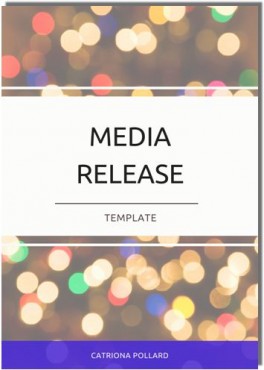Freelance journalists are always looking for good content to pitch to publications. Creating a relationship with a freelancer can be the difference between receiving mediocre media coverage and achieving great media coverage for you or your client. To ensure you achieve the coverage you desire, it is worthwhile to consider forming a relationship with a freelance journalist.
Renowned freelance journalist Nina Hendy has given some great insight to how she relates with PR professionals and why these relationships are important to the success of her work as a freelance journalist in Australia.
The difference between freelance and in-house journalism
There may be a lot of people unsure of the difference between freelance and in-house journalism. Realising the difference can be significant when deciding how to contact a journalist, and what type of story you are pitching.
Nina says as a freelance journalist, you are often sourcing stories for yourself, rather than having stories fed to you. So it’s important for a freelance journalist to develop a good relationship with PR professionals and learn to effectively communicate with them. “Freelance journalists are really a brand unto themselves and they really need to foster those relationships.”
With this in mind, make sure you have a newsworthy pitch, and remember, a freelance journalist may only have a handful of editors to pitch to, contending with other journalists to produce exciting and exclusive stories. The freelance journalist’s stories need to be current, topical and in line with the publication they are pitching to.
How to pitch to a freelance journalist
Nina says that as a freelance journalist she prefers email as the best method for a pitch. Always on the lookout for a great exclusive, she is not looking for just another media release.
So take some time to investigate what each particular freelance journalist covers and whether or not your story will interest them. Look at some recent stories from the particular journalist you want to contact, or even contact them and ask what type of stories they like to cover.
What constitutes a great pitch
Once you have done this, set your pitch out in an email. Making your email concise and to the point is the best way to get it noticed. Stating facts and statistics is what freelance journalists want to read.
“I don’t even want to read a media release, I just want ‘this person’s amazing, and they’ve been doing this stuff. Here are some stats around their business,” says Nina. Editors will always want statistics from their journalists, so always remember to give relevant data they can use.
Pictures are also a great way to communicate information effectively. Something fresh and new, that hasn’t been around for years, will have the most effect. An editor doesn’t want to see photos that are already in their archives.
What happens next?
Once you have emailed your pitch, it’s a good idea to follow up with a phone call. If they are eager to develop relationships with you, freelance journalists will happily respond and let you know if they need more information and if they can use your story.
So always remember that freelance journalists are looking to develop relationships with PR professionals and use them to get fresh and exciting news stories to pitch to their editors. Using these tips may help with your structure and strategy the next time you need to gain exposure for a client, or even develop awareness for your own brand!
Watch the video below of Catriona Pollard interviewing Nina Hendy.
Download your FREE media release template today and learn how to structure a media release to get the media coverage you deserve.
Sydney Public Relations Agency, CP Communications provides specialist media, traditional and online PR strategies that get amazing results. Contact us today. For more great tips visit our website www.cpcommunications.com.au.

